Pines in the Mojave Desert
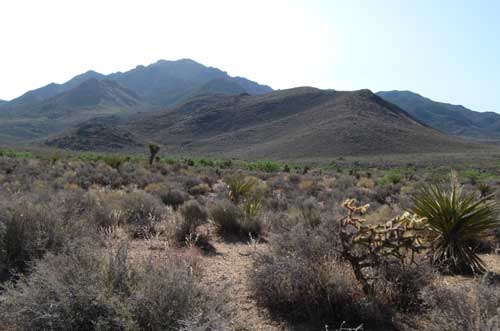
By LMC
Members of BRW took a hike on Mt. Tipton Wilderness in Mohave County, Arizona, this past August 2009. The Cerbat Mountains are a small but rugged range north of Kingman in the northwest area of the state near the Colorado River.
Administered by the Bureau of Land Management, this wilderness is 30,760 acres, with a small grove of Ponderosa pines on the 7,148-foot peak - a sky island relict of the Ice Age in this arid desert.
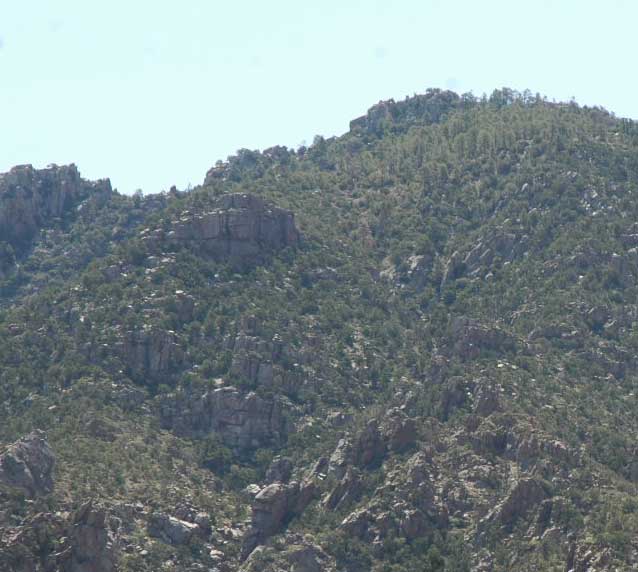
^Ponderosa pines can be seen on the north side of Mt. Tipton peak.
The morning was beautiful, not too hot, as we approached the wilderness from the community of Dolan Springs in wide Detrital Valley. There are no Saguaro cacti in this part of Arizona: we were in the eastern-most Mojave Desert, but it is a unique part with much summer rain. South by Kingman the vegetation transitions into the Sonoran Desert, where such marker-plants as Ocotillo and Palo verde begin to appear.

^The Pinnacles, just north of Mt. Tipton, also in the wilderness.
No trails lie on this side of the mountain, although a loop trail exists on the east slope to the base of the Pinnacles. The going was slow due to the thick Blackbrush scrub that we had to push through. Rough ravines and rocky areas made the hike a challenge. We did not reach the peak this time, but the views were incredible and the plant life very diverse.
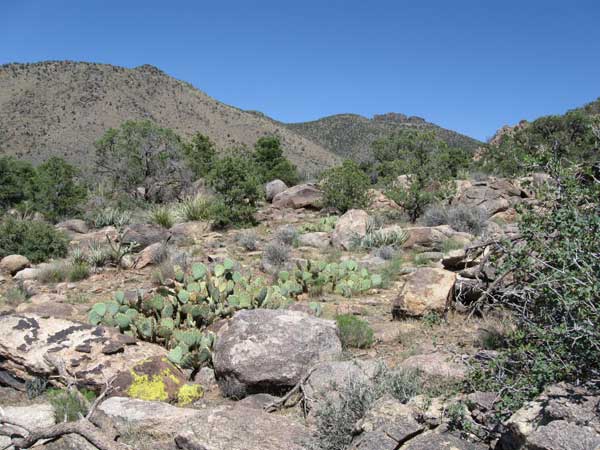
^Prickly pears (Opuntia phaeacantha) were common on the slopes of the range in open spots, among thickets of Scrub oak and Pinyon pine.
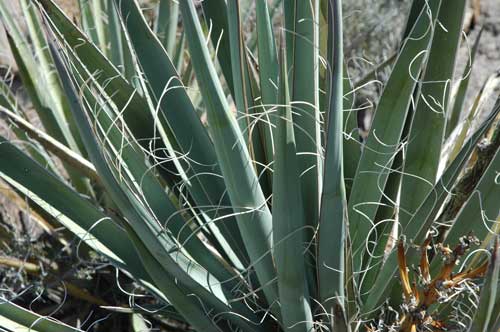
^Bannana yucca (Yucca baccata), with blueish-pale spear-leaves.
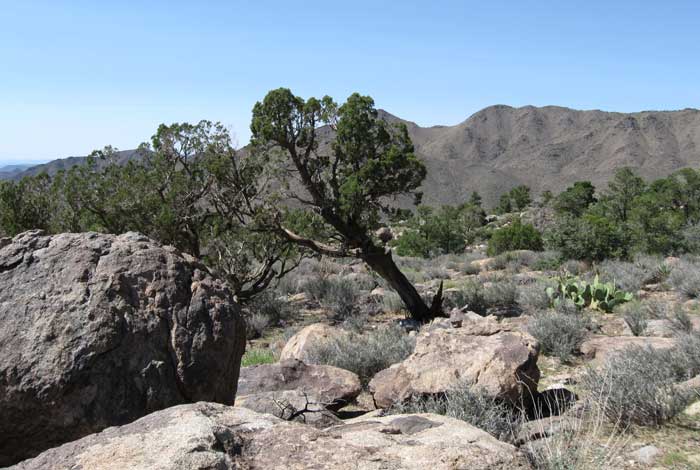
^Sculpted juniper.
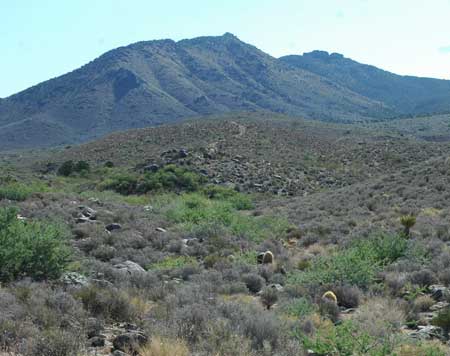
^Blackbrush, Barrel cacti, and green Catclaw acacias clothe the lower slopes of the Cerbat Mountains. The hiking was difficult in this dense brush, but worth the views.
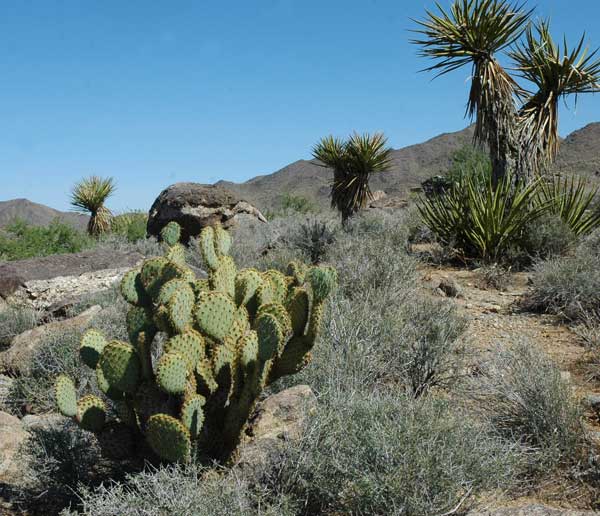
^A Pancake prickly pear (Opuntia chlorotica) amid Blackbrush and Mojave yuccas.
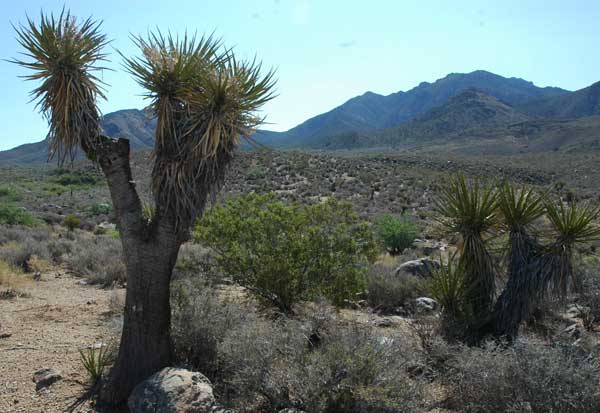
^Tree-like Mojave yuccas (Yucca schidigera).
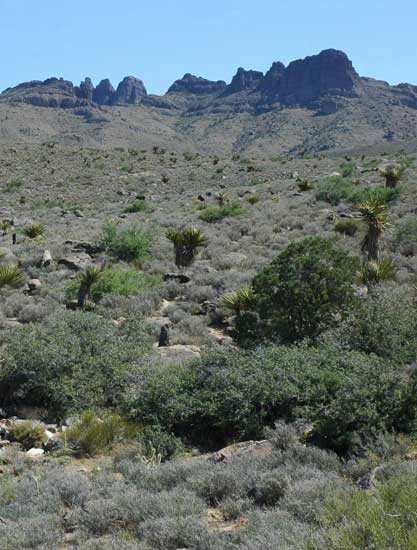
^The Pinnacles.
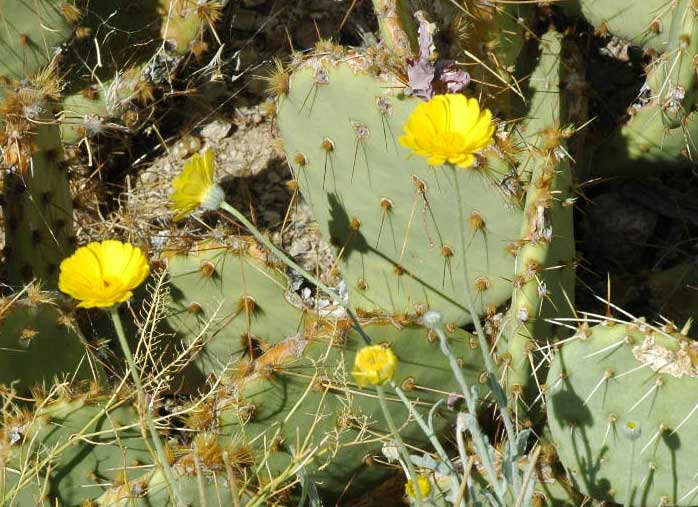
^Desert marigolds (Baileya multiradiata) flowering in a prickly pear patch.
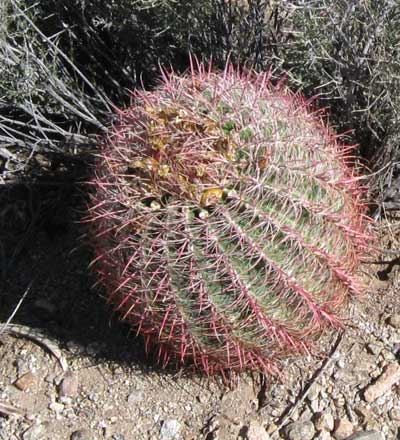
^Barrel cactus (Ferocactus cylindraceus).
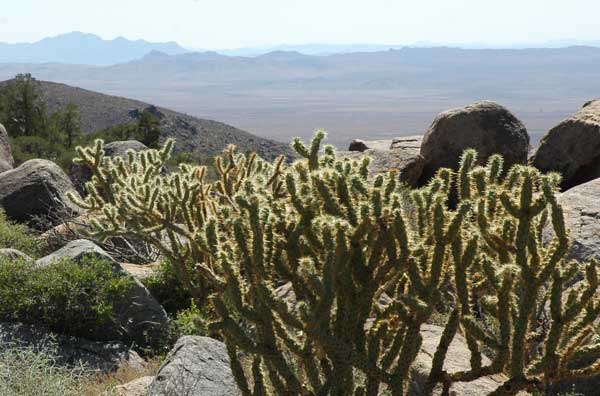
^Buckhorn cholla (Cylindropuntia acanthocarpa) looking westward towards the Colorado River.
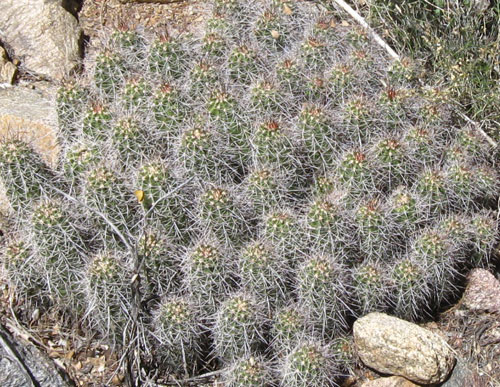
^Claretcup cactus (Echinocereus triglochidiatus). Also called Mojave mound cactus.
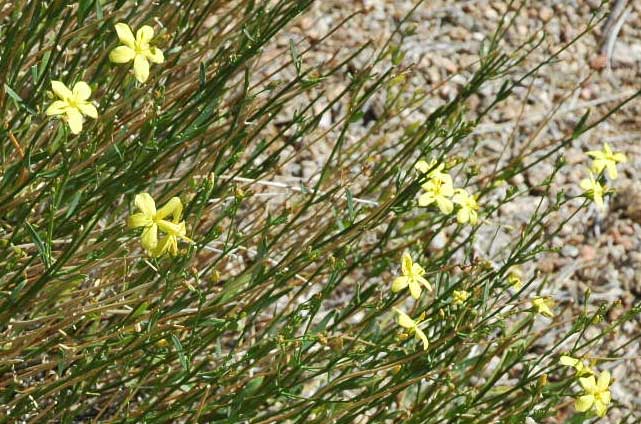
^Yellow-flowering Gaura shrub (Gaura sp.).
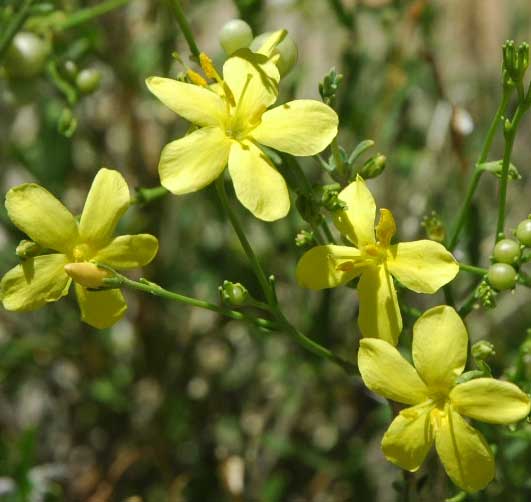
^Flowering Gaura in summer.
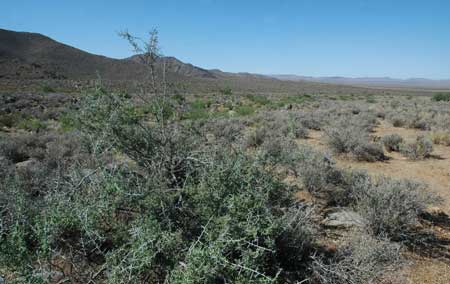
^Graythorn (Ziziphus obtusifolia) shrub among Blackbrush on the upper bajada.
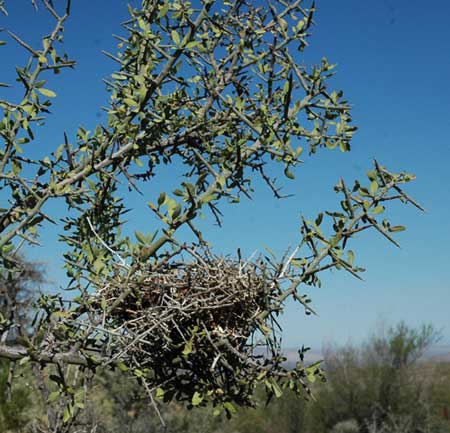
^Bird nest in a Graythorn shrub.
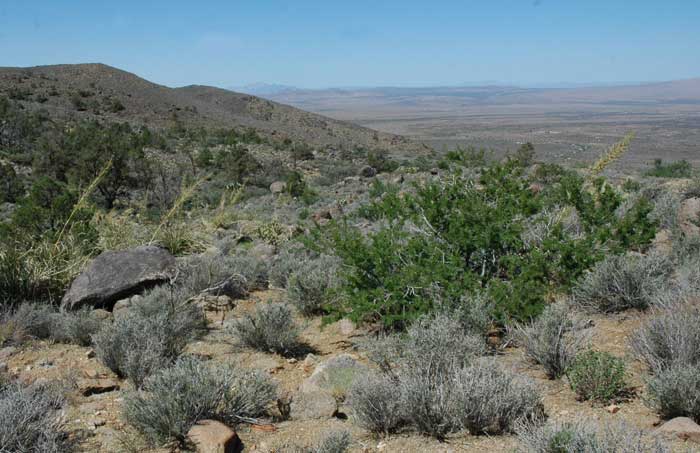
^Blackbrush and Catclaw, with Nolinas (Nolina microcarpa), looking northwest across Detrital Valley.
Reptile Biogeography
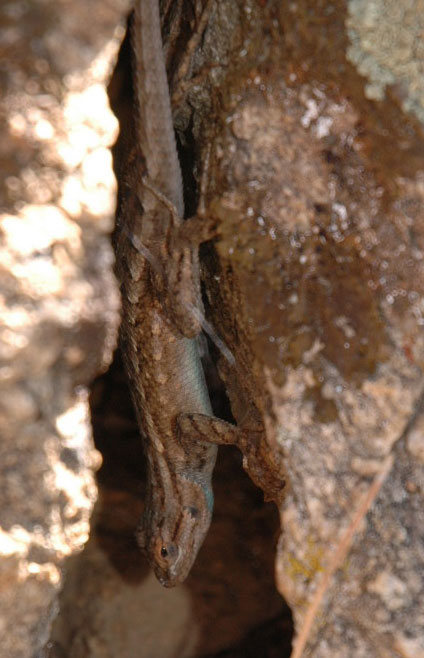
^A female Eastern fence lizard (Sceloporus undulatus) hiding in a rock crevice.
The Colorado River forms a major barrier to certain animals, especially reptiles and mammals. Several species pairs meet at the river, having evolved in parallel but separate directions. Fence lizards are one example.
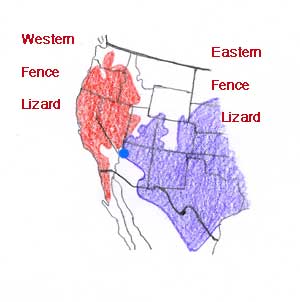
^Map showing how the Colorado River divides two similar species of lizard. The blue dot indicates the Mt. Tipton area.
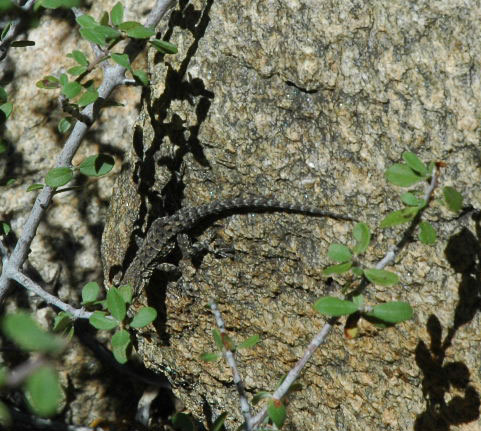
^Tree lizard (Urosaurus ornatus) on boulder in canyon. These arboreal lizards also end their range at the Colorado River, but are found all over Arizona.
Montane Bird Life
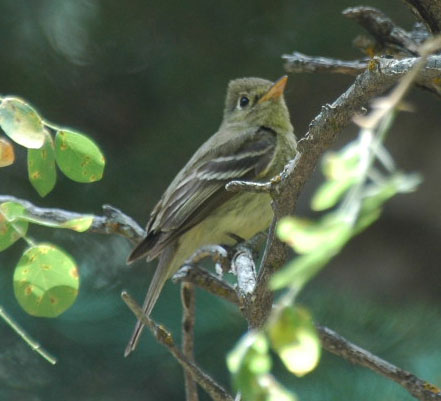
^Cordilleran flycatcher in higher forest. This sky island provides islands of moister habitat in the middle of a hyperarid desert. We saw this small flycatcher high in the Pinyon-juniper woodland.
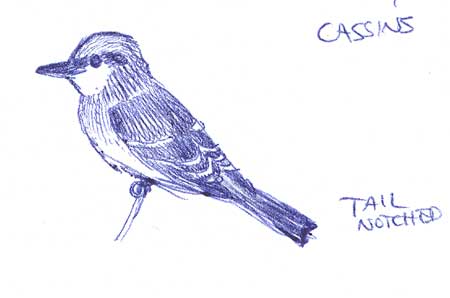
^I sketched this Cassin's kingbird in the lower Blackbrush foothills.
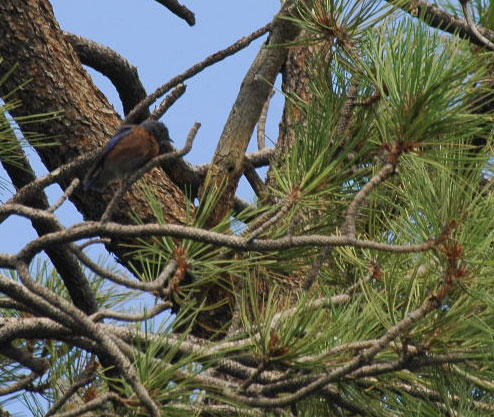
^Western bluebird in Ponderosa pine (seen on nearby Hualapai Mountain Park to the south).
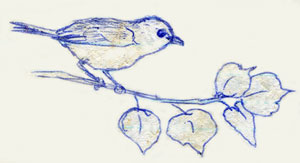
^Gray vireo sketch. A Gray vireo sand noisily in dense Pinyon pine woodland in a higher canyon.
Rugged Forest
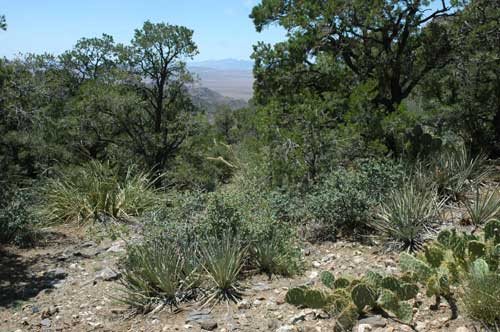
^Higher Pinyon woodland with Banana yuccas, Nolinas, ^and prickly pears.
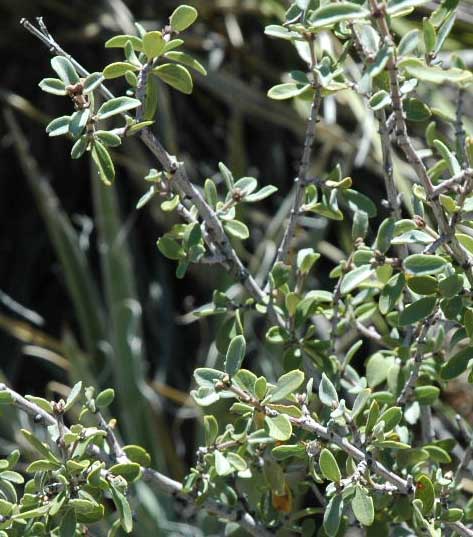
^Desert ceanothus (Ceanothus greggii var. vestitus), a small-leaved shrub in the pinyon woodland.
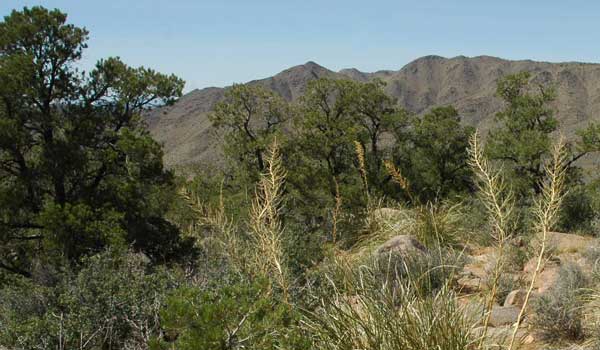
^Dry flowering stalks of Nolinas amid the Pinyons.
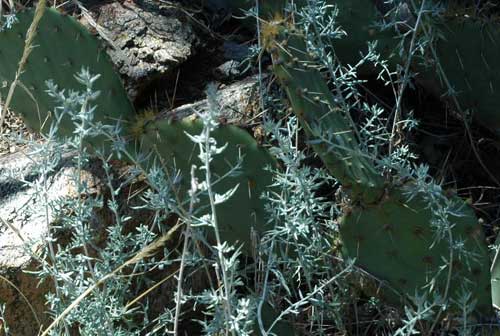
^Mugwort and prickly pear.
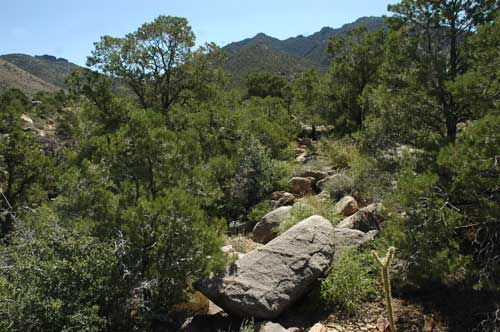
^Dense thickets of low Scrub oak fill the understory of the Pinyon-juniper woodland, with the peak in the distance.
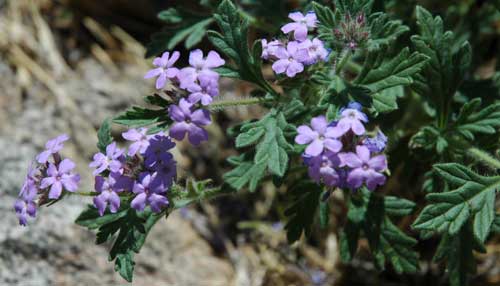
^Woodland verbena (Verbena sp.) flowering in a dry canyon wash in the forest.
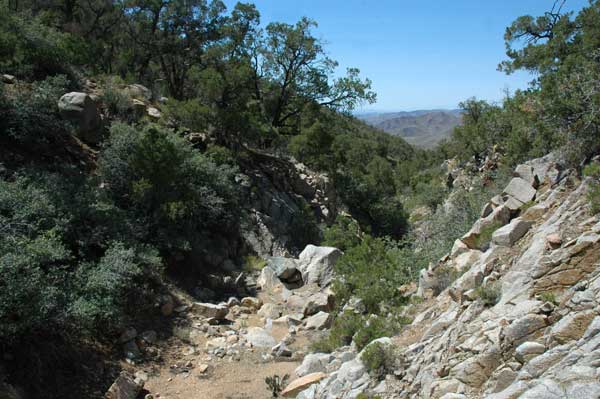
^Dry canyon looking back down toward the White Hills, site of a proposed wind energy development.
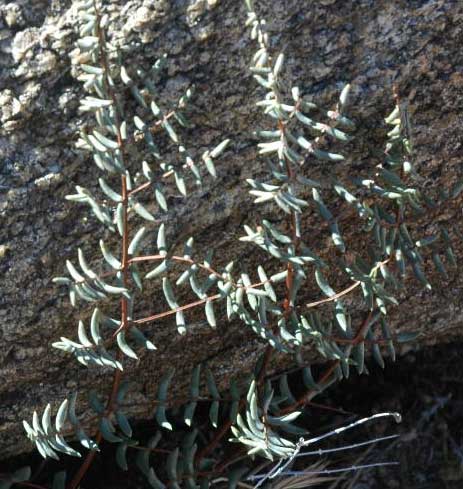
^Spiny cliff brake (Pellaea longimucronata), an arid-adapted fern that grows in moister microclimates behind boulders in the shade.
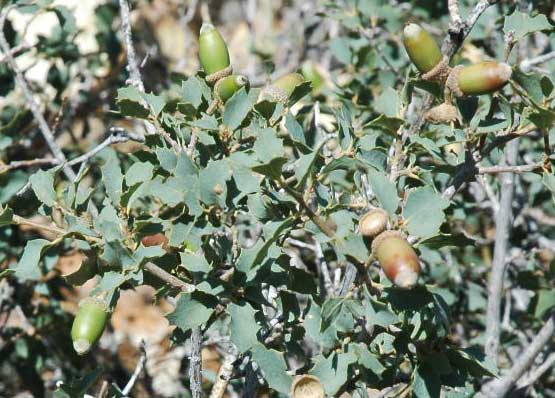
^Acorns of a Scrub oak (Quercus turbinella). Scrub jays collect these valuable food items and bury many of them for later use. Some get away from the jay's memory and sprout.

^Western scrub jay taking an acorn and caching it in the dirt and leaf litter.

^We found this amazing walking stick insect on the ground -- it looked like a grass stem.
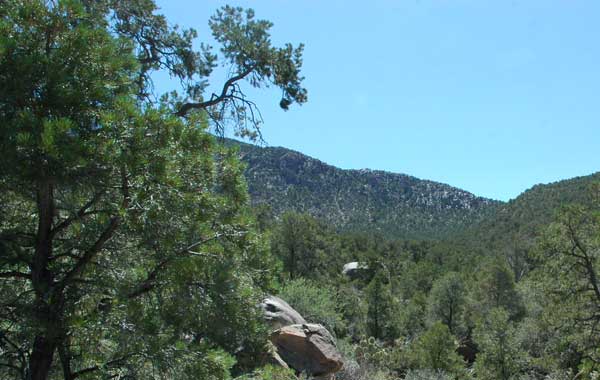
^View up the rough canyon we hiked up to the ridge, where we turned around.
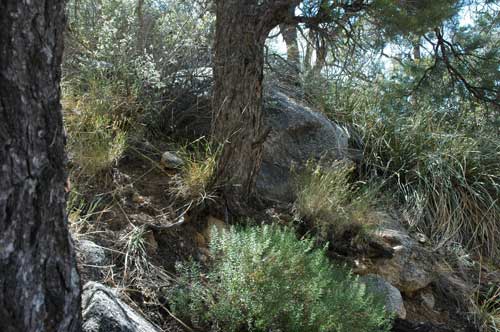
^A moisture-loving Blue wildrye (Elymus glaucus) hugs the shady trunk base of a Pinyon pine. Grass-like Nolinas grow to the right, a succulent related to yuccas.
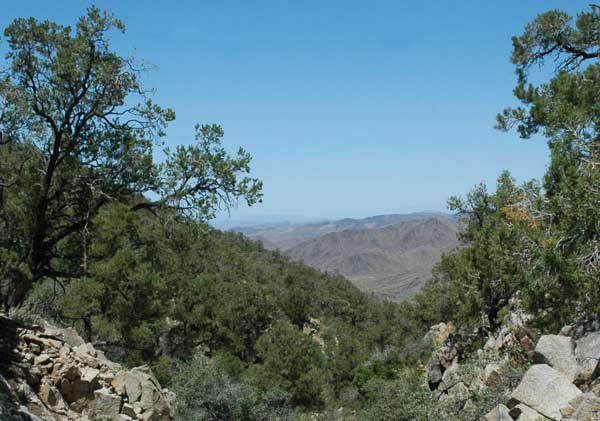
^View of the White Hills.
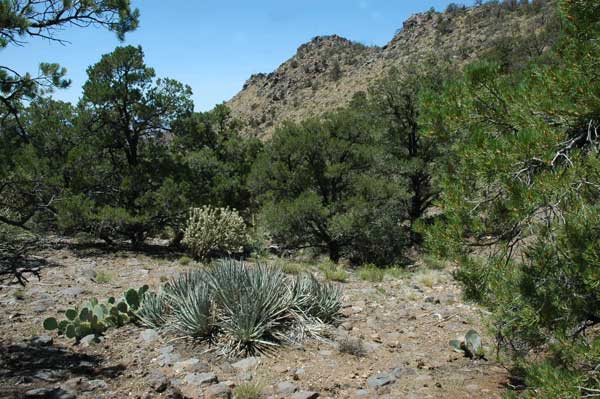
^Below the peak. We did not reach the Ponderosa grove on this trip, but we plan on returning to this beautiful mountain.
See Bureau of Land Management Mt. Tipton Wilderness information >>here.
